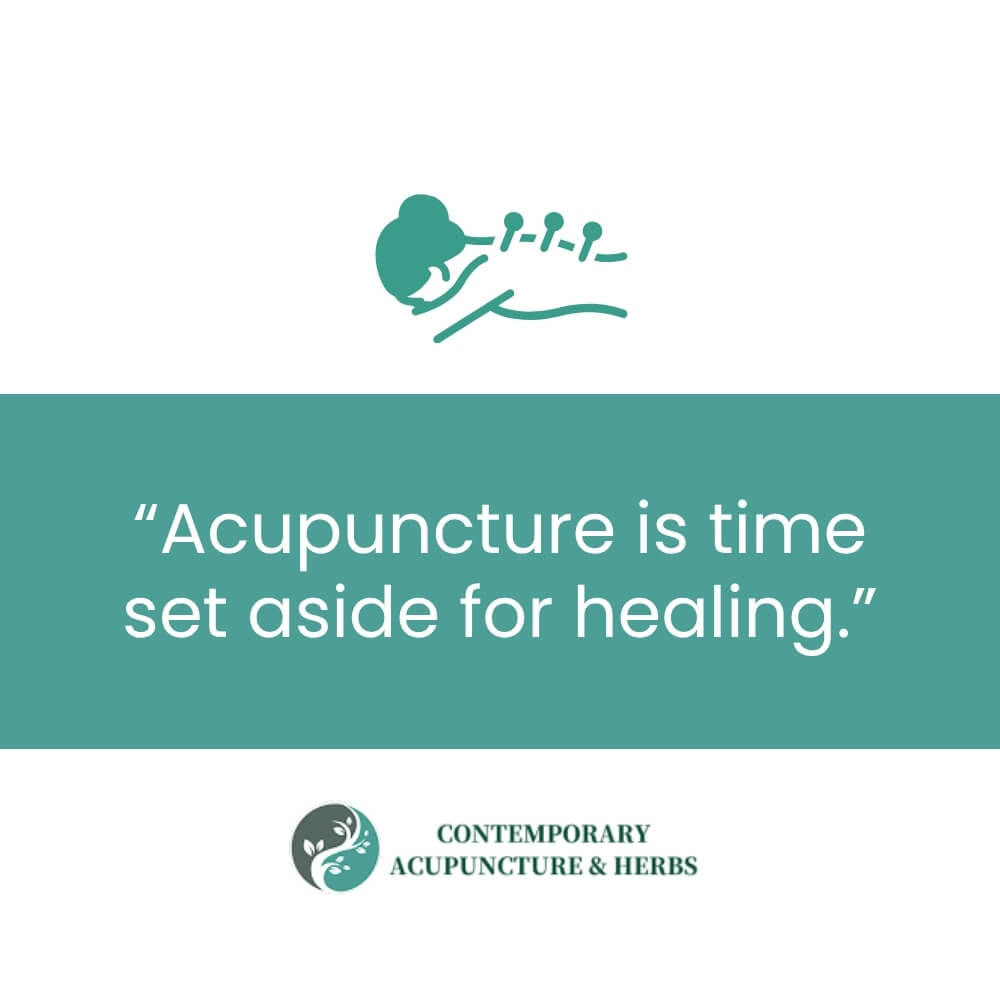If you’ve been considering acupuncture, one of the first things you might wonder is how much time to set aside for a session. Most appointments last between 30 and 60 minutes, with the first visit usually taking a bit longer.
Knowing what happens during that time can ease first-visit nerves and help you plan your day with confidence. A session also includes consultation, diagnosis, and time to relax while your body responds to treatment.
The length may vary depending on whether it’s your first appointment, the condition being addressed, and the practitioner’s approach.
In this guide, we’ll walk you through what to expect from your initial consultation to follow-up visits. You’ll see a step-by-step timeline, learn why sessions take the time they do, and get practical tips to make the most of your experience.
Ready to Experience Acupuncture for Yourself?
Understanding how long an acupuncture session lasts is just the first step. The best way to know what it feels like and how it can help is to try it in a safe, professional setting. At Contemporary Acupuncture, every session is tailored to your needs, whether it’s your very first visit or part of ongoing care.
Visit us today and see how acupuncture can fit seamlessly into your routine.
Initial vs. Follow-Up Sessions

The length of your acupuncture appointment depends on whether it’s your first time or a return visit.
First Appointment: 60–90 minutes
Your initial session takes longer because it begins with a full consultation. The practitioner will review your medical history, ask questions about your health concerns, and may check your pulse and tongue.
This information guides a personalized treatment plan. Once the assessment is complete, the acupuncture portion begins, with needles typically in place for 15–30 minutes.
Follow-Up Sessions: 30–60 minutes
Subsequent visits usually focus on treatment. Since your practitioner already understands your background, the intake process is much shorter.
Most of the session will be spent on the acupuncture itself, sometimes with added therapies such as cupping or gua sha if needed.
Why the Difference Matters
Taking extra time at the start builds a strong foundation for care. The detailed consultation ensures that your treatment addresses the root of your concern, not just the symptoms.
Once this foundation is established, your ongoing sessions can be shorter and more focused.
Timeline of a Typical Acupuncture Session

Understanding what happens during an acupuncture session makes it easier to relax and enjoy the experience. While every practitioner has their own style, most visits follow a similar rhythm.
Here’s a general timeline of how a session unfolds:
0–15 minutes: Consultation and assessment
The session usually begins with a short check-in. Your practitioner may ask how you’ve been feeling since the last visit, review your main concerns, and take your pulse or look at your tongue. This information helps guide needle placement for the day’s treatment.
15–20 minutes: Needle insertion
Once the treatment plan is clear, fine sterile needles are gently placed at specific points. Most patients feel little more than a quick pinch or mild tingling. The process is gradual and paced to keep you comfortable.
20–40 minutes: Resting period with needles in place
This is the quiet part of the treatment. The lights are often dimmed, soft music may play, and many people drift into a deep state of relaxation. It’s common to feel warmth, heaviness, or a gentle flow of energy in different parts of the body.
40–45 minutes: Needle removal and wrap-up
After the appropriate time, the needles are carefully removed. Your practitioner may discuss how you feel, share aftercare tips, and outline the plan for your next visit. Some sessions also include additional therapies like cupping or gua sha, which may extend the total time slightly.
This flow gives structure to the experience while leaving space for individual adjustments. Whether it’s your first or tenth visit, the session is designed to balance effective treatment with relaxation.
Factors That Influence Session Length

While most acupuncture sessions fall into a predictable range, there are a few reasons why your appointment may be a little shorter or longer.
The Condition Being Treated
- Shorter sessions (20–30 minutes): Often used for acute issues such as a sprained ankle, tension headaches, or recent sports injuries.
- Medium sessions (45–60 minutes): Common for stress, sleep concerns, digestive problems, or ongoing pain.
- Longer sessions (60+ minutes): Needed when treating complex or multi-symptom conditions and chronic conditions such as back and neck pain.
Practitioner’s Style
Different schools of acupuncture have slightly different approaches. For example, Japanese acupuncture often uses fewer needles for shorter periods, while traditional Chinese methods may involve longer retention times.
Patient Response
Your body’s response can guide how long the needles remain in place. If you relax quickly and show signs of improvement, the session may be on the shorter side. If your system needs more time, the practitioner may extend it.
Combination Therapies
Acupuncture is sometimes paired with other techniques such as cupping, gua sha, or moxibustion. These additions can add anywhere from 10 to 30 minutes to the total appointment.
In every case, the goal is not to stretch time for its own sake but to match the length of the session with what your body needs.
What to Expect Beyond Timing

Knowing how long an acupuncture session lasts is only part of the story. Understanding what the setting feels like can make your first visit much more comfortable.
What to Wear
Loose, comfortable clothing is best. Many points are on the arms, legs, and back, so clothing that can be easily rolled up or adjusted helps your practitioner access the right areas without disruption.
The Treatment Space
Most clinics create a relaxing environment with soft lighting and gentle music. The goal is to help you unwind so your body can respond fully to treatment.
What It Feels Like
Sensations vary from person to person. Some notice a quick pinch as the needle goes in, followed by a mild tingling or heaviness that fades quickly. Others describe a gentle wave of relaxation. It’s common to feel calm enough to nap during the resting period.
Other Treatments
Depending on your needs, your practitioner may suggest complementary therapies such as cupping or gua sha. These may extend the session slightly but are often included to enhance results.
When you know what to expect, it’s easier to relax and get the full benefit of your time on the table.
Experience Relaxation That Fits Into Your Day
During each session at Contemporary Acupuncture, the focus is on creating a balance between effective treatment and a calming environment. Patients often leave feeling both supported and refreshed, making it easier to carry the benefits into daily life.
Schedule your appointment and see how acupuncture can work for you.
How to Maximize Your Acupuncture Session

The time you spend in an acupuncture session is valuable, and a few simple steps can help you get the most benefit from it.
- Eat lightly beforehand: Arrive neither hungry nor overly full. A small meal or snack a couple of hours before treatment keeps your energy steady.
- Skip stimulants and alcohol: Caffeine and alcohol can make your body less responsive to treatment. It’s best to avoid them on the day of your appointment.
- Wear loose clothing: Comfortable clothes make it easier for your practitioner to reach common acupuncture points on your arms, legs, and back.
- Plan for a calm schedule after: If possible, give yourself time after the session to rest. Some people feel deeply relaxed, while others feel energized. It helps to allow space for either response.
- Communicate openly: Share any changes in your health or symptoms since your last visit. Let your practitioner know how you feel during treatment so adjustments can be made if needed.
These small preparations make each session smoother and allow your body to respond fully.
What If You Need a Shorter Session?

Life doesn’t always allow for a full hour on the table, and that doesn’t mean you have to miss out on treatment. Acupuncture sessions can be adjusted to fit your schedule, especially if you let your practitioner know ahead of time.
In a shorter visit, the consultation may be streamlined and only the most essential points needled. While it’s ideal to have the full resting period, even 20–30 minutes can provide noticeable relief and help keep your treatment plan consistent.
For patients managing busy routines, shorter sessions can be scheduled more frequently to maintain progress. What matters most is consistency. Regular treatments, even if abbreviated, support long-term improvement.
The key is communication. If you know you’ll need to leave early, let your practitioner know at the start so the session can be structured with your time frame in mind.
Frequently Asked Questions
Is acupuncture effective if I only go once?
One session may bring temporary relief or relaxation, but lasting results usually require a series of treatments. Your practitioner will recommend a schedule based on your condition.
How many sessions will I need?
It depends on your goals and health concerns. Acute issues may improve in just a few visits, while chronic or long-term conditions often require ongoing care. Many patients notice changes within 4–6 sessions.
Does a longer session mean better results?
Not necessarily. What matters most is the appropriateness of the treatment. A focused 30–40 minute visit can be just as effective as a longer one if it’s tailored to your needs.
What if I feel restless while the needles are in?
It’s normal to shift a little or feel the urge to move. If you’re uncomfortable, let your practitioner know—they can adjust or shorten the retention time so you remain at ease.
Still have questions? Visit our Acupuncture FAQ page
Making the Most of Your Time in Treatment
An acupuncture session is a carefully structured process designed to support your health. Most visits last between 30 and 60 minutes, with first appointments taking longer to allow for consultation and assessment. The actual needle time is usually around 15–20 minutes, giving your body the opportunity to rest, reset, and respond.
Whether you’re coming in for stress relief, pain management, or overall wellness, the length of your session is adjusted to your needs. The goal is always the same: to provide effective, individualized care in a setting where you can feel comfortable and supported.
Ready to experience the benefits for yourself? Schedule a visit at Contemporary Acupuncture and discover how a personalized session can fit smoothly into your routine.

